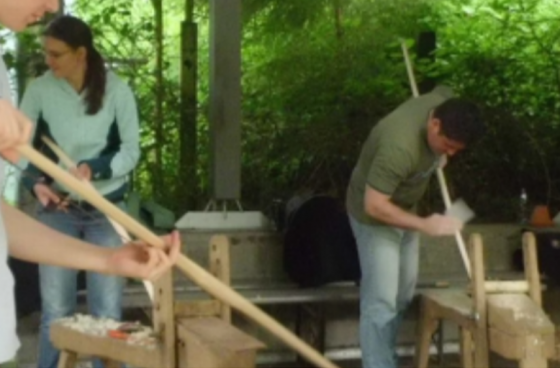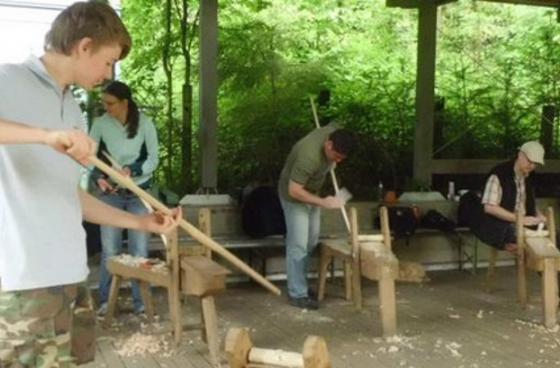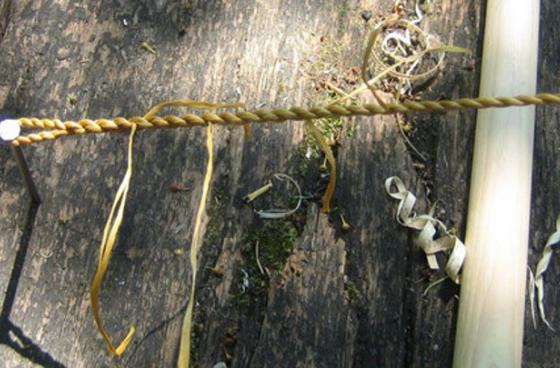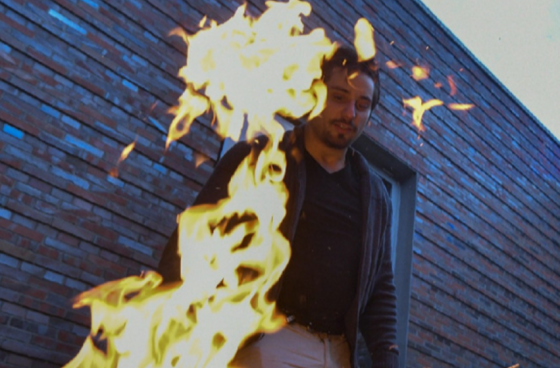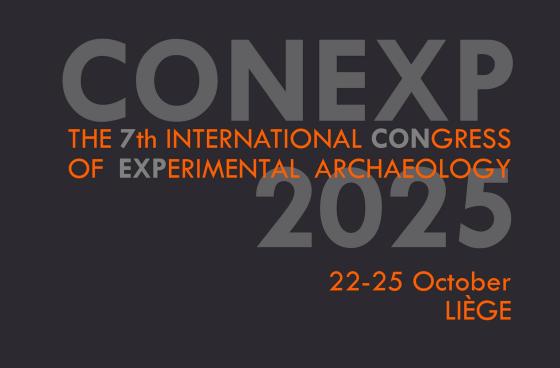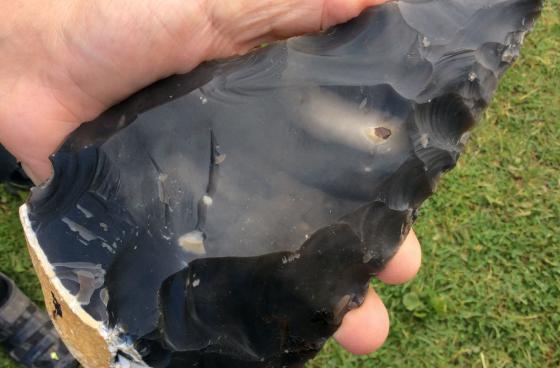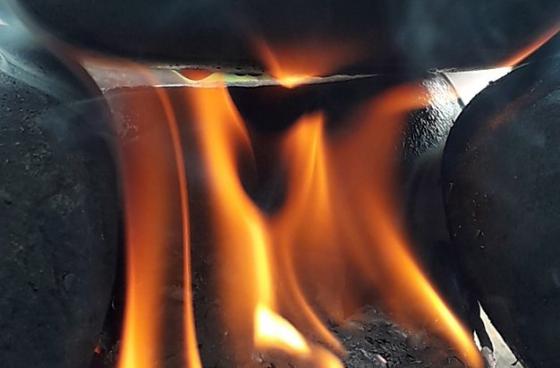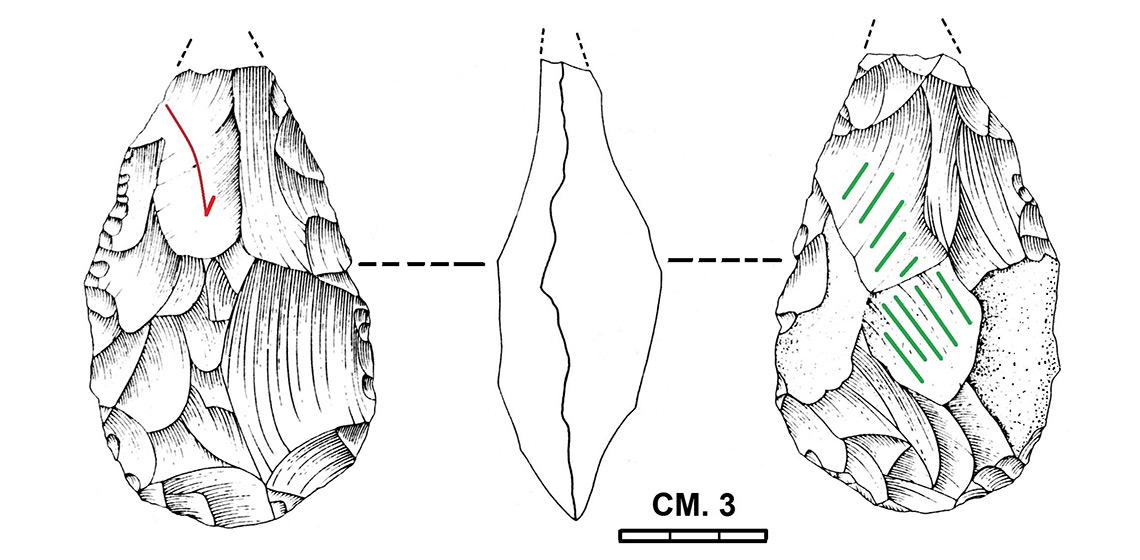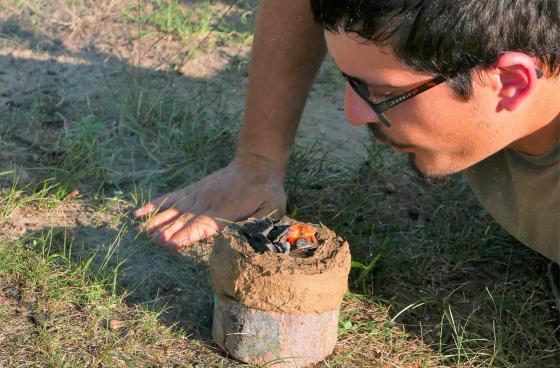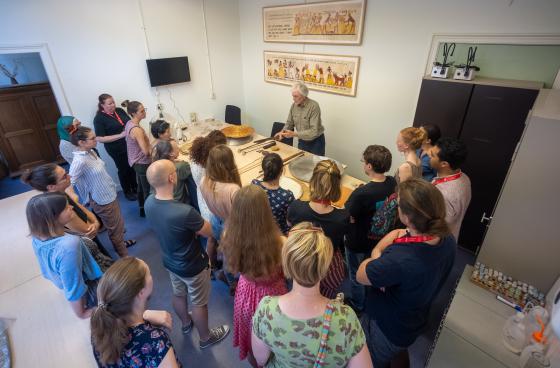Palaeolithic
Traditional Bow Making
Country
- Germany
Working with a bow and arrow has archaeological, historical, technical, sporting and craft aspects. During the weekend, the basics of bow making and archery with traditional equipment will be taught. Ready-to-use bows and arrows are manufactured under expert guidance based on archeological or ethnological models.
Traditional Bow Making I
Country
- Germany
Dealing with the bow and arrow has archaeological, historical, technical, sporting and handicraft aspects. Over the course of the weekend, the basics of bow making and archery with traditional equipment are taught. Ready-to-use bows and arrows based on archaeological or ethnological models are produced under expert guidance.
Bow Building Demonstration
Country
- Germany
Söhnke Raimann, archaeotechnician at the AFM, demonstrates the production of a ready-to-shoot bow and arrows.
Fire and Light - Sparks and Flames
Country
- Germany
With warming sparks and flames, the Oerlinghausen Archaeological Open-Air Museum will welcome you on this day. Söhnke Raimann uses many examples to show how lighting a fire worked in the days without matches and lighters and tells interesting stories about it. Experience how a spark becomes a cozy fire. 
CONEXP 2025
Country
- Belgium
TraceoLab is excited to announce that the 7th CONEXP is coming to Liège from October 22-25, 2025! This congress is dedicated to all aspects of experimental archaeology, encompassing all periods, materials, and research questions. Save the date, and more information will follow soon!
Flint knapping workshop
Country
- United Kingdom
Discover how our ancestors made tools out of stones in the ground with flint knapper and author Bob Turner. Learn to understand flint as a material and how to knap and work it to make ancient tools. Discover the talents and skills of ancient Britons and go home with a flint tool you have made yourself!
Conference: Trial by Fire 2020
Country
- United Kingdom
An interdisciplinary conference on the transformative power of fire.
Fire always leaves its mark and a wealth of information behind. Our aim is to bring together research on experimental archaeology, archaeomaterials, archaeobotany, anthracology, pyrotechnology, taphonomic investigations including burned bone, combustion features, or accidental burning.
Basalt Handaxes: Preliminarily Testing the Lithic Translation Strategy Hypothesis and Comparisons with the Fontana Ranuccio Site Bifacial Tools
***The oldest bifacial “handaxes” known so far belong to the “Kokiselei 4” site, dated to 1.76 Ma (West Turkana, Kenya; Texier, 2018). They have been manufactured by direct lithic percussion on magmatic effusive stone materials. Considering that the evolution of “fully operational intelligence” (Wynn, 1979) has been associated with the so-called...
International Camp of Experimental Archaeology
Country
- Poland
We invite everyone interested in experimental archaeology to participate in a two-week International Camp of Experimental Archaeology, connected with a seminar presenting the state of art of this method in Poland and accompanying use-wear workshops.
Summer School - Food from Field to Fork, an archaeobotanical Approach
Country
- the Netherlands
Recent discussions about health, food safety and an awareness of vanishing traditions have resulted in an increasing interest in traditional foods and food heritage.

